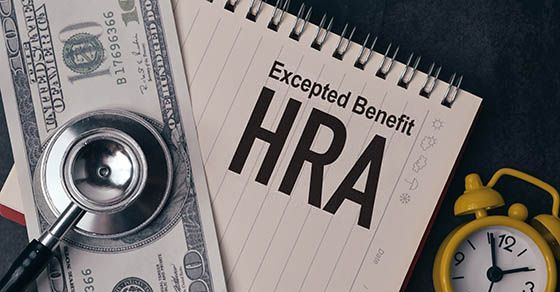Weighing the pluses and minuses of HDHPs + HSAs for businesses
Will your company be ready to add a health insurance plan for next year, or change its current one? If so, now might be a good time to consider your options. These things take time.
A popular benefits model for many small to midsize businesses is sponsoring a high-deductible health plan (HDHP) accompanied by employee Health Savings Accounts (HSAs). Like any such strategy, however, this one has its pluses and minuses.
Ground rules
HSAs are participant-owned, tax-advantaged accounts that accumulate funds for eligible medical expenses. To own an HSA, participants must be enrolled in an HDHP, have no other health insurance and not qualify for Medicare.
In 2025, an HDHP is defined as a plan with at least a $1,650 deductible for self-only coverage or $3,300 for family coverage. Also in 2025, participants can contribute pretax income of up to $4,300 for self-only coverage or $8,550 for family coverage. (These amounts are inflation-adjusted annually, so they’ll likely change for 2026.) Those age 55 or older can make additional catch-up contributions of $1,000.
Companies may choose to make tax-deductible contributions to employees’ HSAs. However, the aforementioned limits still apply to combined participant and employer contributions.
Participants can make tax-free HSA withdrawals to cover qualified out-of-pocket medical expenses, such as physician and dentist visits. They may also use their account funds for copays and deductibles, though not to pay many types of insurance premiums.
Pluses to ponder
For businesses, the “HDHP + HSAs” model offers several pluses. First, HDHPs generally have lower premiums than other health insurance plans — making them more cost-effective. Plus, as mentioned, your contributions to participants’ HSAs are tax deductible if you choose to make them. And, overall, sponsoring health insurance can strengthen your fringe benefits package.
HSAs also have pluses for participants that can help you “sell” the model when rolling it out. These include:
- Participants can lower their taxable income by making pretax contributions through payroll deductions,
- HSAs can include an investment component that may include mutual funds, stocks and bonds,
- Account earnings accumulate tax-free,
- Withdrawals for qualified medical expenses aren’t subject to tax, and the list of eligible expenses is extensive,
- HSA funds roll over from year to year (unlike Flexible Spending Account funds), and
- HSAs are portable; participants maintain ownership and control of their accounts if they change jobs or even during retirement.
In fact, HSAs are sometimes referred to as “medical IRAs” because these potentially valuable accounts are helpful for retirement planning and have estate planning implications as well.
Minuses to mind
The HDHP + HSAs model has its minuses, too. Some employees may strongly object to the “high deductible” aspect of HDHPs.
Also, if not trained thoroughly, participants can misuse their accounts. Funds used for nonqualified expenses are subject to income taxes. Moreover, the IRS will add a 20% penalty if an account holder is younger than 65. After age 65, participants can withdraw funds for any reason without penalty, though withdrawals for nonqualified expenses will be taxed as ordinary income.
Expenses are another potential concern. HSA providers (typically banks and investment firms) may charge monthly maintenance fees, transaction fees and investment fees (for accounts with an investment component). Many companies cover these fees under their benefits package to enhance the appeal of HSAs to employees.
Finally, HSAs can have unexpected tax consequences for account beneficiaries. Generally, if a participant dies, account funds pass tax-free to a spouse beneficiary. However, for other types of beneficiaries, account funds will be considered income and immediately subject to taxation.
Powerful savings vehicle
The HDHP + HSAs model helps businesses manage insurance costs, shifts more of medical expense management to participants, and creates a powerful savings vehicle that may attract job candidates and retain employees. But that doesn’t mean it’s right for every company. Please contact us for help assessing its feasibility, as well as identifying the cost and tax impact.
© 2025










